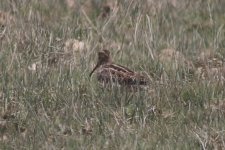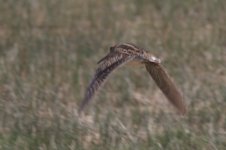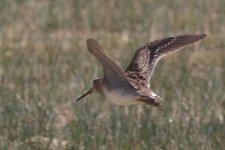opisska
rabid twitcher

Looking at Oman Snipes made me reconsider an older record from Malaysia. Sadly, there are not really any sharp pictures, but from those that exist, it looks to me as if the bird had the Common Snipe's white trailing edge to secondaries while also having the Pin-tailed Snipe's uniformly barred underwing. The legs also look rather long w.r.t tail and I think the coverts are also more Pin-tailed-like? So is the trailing edge just a false impression due to blurry pictures?






